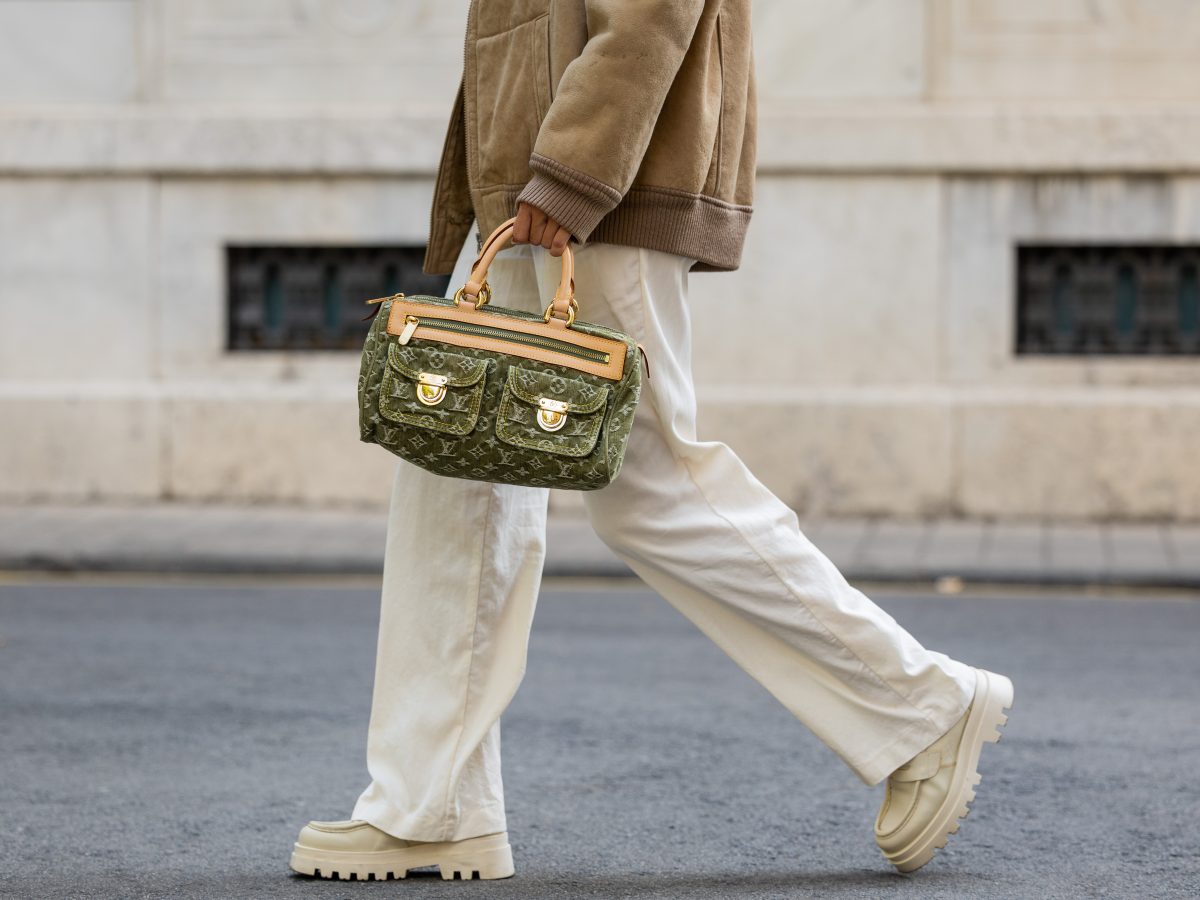
Thrifting used to be a movement. What started as a sustainable, creative way to express individuality has evolved into something far more exclusive. Vintage fashion once represented resourcefulness, an act of rebellion against fast fashion and waste. Today, it often represents hierarchy. What was once about saving the planet has shifted toward saving face.
The change has been years in the making. Archive pieces began to dominate Instagram feeds in the mid-to-late 2010s, especially among influencers and fashion enthusiasts. By the early 2020s, the look was everywhere, rare Dior saddle bags, early 2000s Cavalli, or iconic Jean Paul Gaultier prints styled like trophies. Vintage once symbolized sustainability, but now it signals access. The question has quietly changed from “How can I express myself?” to “How rare is my piece?”
Understanding how this happened requires revisiting what these terms actually mean. Vintage refers to clothing that is at least twenty years old, items with history, but not necessarily cultural significance. Archive fashion, however, refers to designer pieces chosen for their rarity, artistic influence, or representation of a specific era in fashion history. All archival pieces may one day be vintage, but not all vintage pieces are archival. The distinction matters because it reveals how fashion’s nostalgia has been rebranded into a form of status.
The original appeal of vintage fashion was its accessibility. Thrift stores, consignment shops, and flea markets offered affordable ways to build a wardrobe while reducing environmental waste. Wearing vintage meant caring about where your clothes came from and choosing individuality over conformity. The energy was communal, people swapped finds, shared tips, and celebrated creativity over cost. That spirit began to shift when social media turned clothing into currency.
Influencer culture changed the tone of thrifting. Once algorithms caught on to the aesthetic appeal of vintage, resale platforms surged. Depop, Grailed, and The RealReal made it possible to buy or sell “vintage” pieces at designer-level prices. What used to be a $10 thrift find could suddenly resell for hundreds, depending on how rare or “viral” it became online. This dramatic price increase helped legitimize the value of secondhand fashion, creating an economy that benefits many small-scale sellers, but the narrative of sustainability gave way to scarcity.
Many stylists and fashion experts argue that the shift reflects a larger cultural obsession with nostalgia and exclusivity. Owning archival fashion offers both nostalgia for the past and validation in the present. A 1990s Prada jacket or early 2000s McQueen corset communicates taste and insider knowledge. These pieces tell the world you are not just shopping—you are collecting. Yet this new form of collecting has raised questions about accessibility and ethics.
The pursuit of rare fashion has priced out the very people who built vintage culture in the first place. Communities that once relied on thrifting for affordability now face inflated prices, as secondhand shops mark up items to meet online demand. Vintage shopping, once an act of sustainability, has become another space where privilege determines participation. The conversation around conscious fashion risks becoming hollow if only those with money can afford to “care.”
Still, it would be unfair to say that the movement has lost all authenticity. Many young people continue to thrift as an act of creativity and care for the environment. They upcycle, mend, and reimagine secondhand pieces in ways that keep the original purpose alive. The difference is that now, the motivations within vintage fashion coexist rather than align. For some, it is about sustainability. For others, it is about status.
This shift also mirrors how Gen Z navigates identity. Fashion has always been a tool for self-expression, but it is now also a form of communication. What we wear online tells people what we value, who we follow, and how culturally informed we appear to be. In a digital age where image carries weight, clothing has become content, and vintage fashion sits at the intersection of authenticity and aspiration.
The evolution of vintage fashion does not have a single villain or hero. It is the product of culture, capitalism, and creativity colliding. Thrifting can still be sustainable, but it can also be performative. Archive collecting can preserve history, but it can also gatekeep it. Vintage fashion today exists in a gray area, somewhere between conscious consumption and curated competition. It is a complex ecosystem, blending commerce and ethics.
Beyond the aesthetics, vintage fashion carries emotional weight. For many young people, thrifting isn’t just a style preference; it’s a way to connect with the stories that came before them. Every scuffed boot or faded tag holds a piece of history, a glimpse into another era’s culture and identity. Wearing vintage lets Gen Z reclaim the past on their own terms, blending nostalgia with individuality. It’s not about imitation, it’s about reinterpretation.
What’s even more exciting is how this revival is reshaping the future of fashion. The focus has shifted from chasing fast trends to curating wardrobes that last, from consuming to preserving. Gen Z isn’t rejecting modernity; we’re redefining it. By weaving together the old and the new, we’re crafting a fashion language that values authenticity, sustainability, and creativity all at once. In that sense, vintage isn’t a return to the past; it’s a movement toward a more intentional future.
Whether this shift feels like progress or loss depends on how you see it. Maybe today’s version of vintage fashion reflects a generation trying to honor the past while still craving something new. It also shows how easily good intentions can get lost once trends take over. Either way, the meaning of “vintage” keeps evolving; what once centered on sustainability now leans toward status. The conversation is no longer just about how we wear things responsibly, but about what our choices say about who we are.